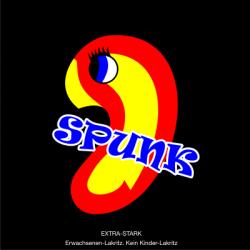Daníel Ágúst on the importance of the visual
How important is the visual aspect to how a band or artists presents itself? Is it a necessary factor, or more of an afterthought?
Speaking as a fan of music, I would say that the visual aspect always gives some hint of the thought behind a project. The visuals often present an angle on a given project, an entry point to it maybe, an attempt to position it in a visual dimension and context. As a musician, I find it necessary to add a visual touch to what’s being presented—the exterior needs to be interesting as well as the interior, if you will.
The packaging marks your first experience of an album or piece of music, at least in the old-fashioned way that was prevalent when I first started buying records. You’d take in the packaging, the visuals, and then you’d spin the record and experience the music while studying the album cover. That first impression was always tremendously important to me, it’s the face of the content, how it introduces itself. Of course, the music itself remains the most important aspect, but when done right, visuals can expand the listener’s experience and understanding of a record.
SHAPING PERCEPTION
Indeed, Gusgus has always placed a big emphasis on the visual…
For our first shows, we created a lot of visuals, with the intent of bringing the music to another level, to add to the audience’s perception and create a bigger experience.
Visual media of course plays a huge part in shaping one’s perception. Music in itself is airy and kind of relative, but when you combine it with images, you can somehow make it tangible, more real. Whether the reality that’s forged is an abstract, figurative one; or the visuals basically illustrate the words—they always serve to create a bigger overall experience.
At least, that’s the goal that I and we have been seeking.
But, while the visual can be a very important factor, it is not a determining one. I love a lot of albums that bear horrible artwork, for instance. Still, it’s always the most fun when the two work together and complement one another, and as a musician you have a duty to try to ensure this happens.
Have you involved yourself a lot in this aspect of Gusgus?
I’ve always been greatly interested in ensuring that our music is accompanied by interesting visuals, and have contributed many an idea through the years. I’ve enjoyed a lot of input in the music videos we’ve made, and then I’ve meddled a lot in our album covers. I always have very strong opinions on those things.
For us, process usually starts with conversing and brainstorming with designers, who then take an idea and move it forward with varying amounts of freedom. Sometimes, they’ll just run with an idea and see it to completion, others we keep our hands in the pie until the very end.
You could say I’m meddlesome in this regard. But that’s because I think it matters.
How did your collaboration with karlssonwilker come about?
Hjalti [Karlsson] approached us around the time we were making ‘Arabian Horse,’ expressing an interest in working with us. The art for record was already in process, but were very interested in working with him and his studio for our next endeavour. We had seen some of what he and his studio had made, and once we started working on ‘Mexico’ we found it rhymed well with the music, the record’s atmosphere.
So we set up a meeting and started throwing ideas back and forth. And now it’s out, and we’re pleased with how it all came out.
DEHUMANIZED
Was the process of making the art for ‘Mexico’ a pleasant one?
Yes. We’re happy with the results. The world they [karlssonwilker] create and work within is very special. And I know it doesn’t necessarily appeal to everyone, but the outcome of our collaboration, and what they came up with, appeal to me.
They also made a music video for the title track, which is, how do I say, a bit of an overflow of the ideas we went through in the process of making the album cover. It corresponds with the cover, and we’re also using it as visuals for our live show on the ‘Mexico’ tour.
The video for “Mexico” is basically a barrage of all kinds of ideas and approaches that make up this distorted, digital world. It’s sort of what’s left when you’ve really removed the exterior of humanity, or human impressions, wholly transformed them into a digital, independently surging environment. It borders on the edge of noise, digital noise. It’s aggressive stimulus, an overflow of information that’s being shoved at you over a very short period.
If you watch the video, you’ll see it’s dehumanized. What you know to be human, what moves like a human and is a human at the core, has been skewed and mutated. The human exterior has been removed. I feel that’s a very interesting approach. At the moment, we are drowning in gadgets and electronics and computers; we’re becoming puppets of the mechanical—that digital virtual world. And the video can be thought of as an expression of that, or commentary on it.
Buy subscriptions, t-shirts and more from our shop right here!


















